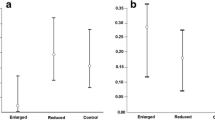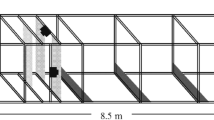Abstract
As a comprehensive fitness parameter, lifetime reproductive success (LRS) is influenced by many different environmental and genetic factors, among which longevity is one of the most important. These factors can be reflected in secondary sexual characters, which may affect the life histories of individuals via social relations with conspecifics. Facultative polygyny in birds is another conspicuous reproductive trait that potentially increases male reproductive success, but lifetime success data in relation to polygyny are scarce. Here, we used 17 years of breeding data to quantify the LRS of male collared flycatchers (Ficedula albicollis) on the basis of lifetime recruitment of offspring. Breeding lifespan showed a positive relationship with LRS, and it was also significantly associated with mean recruitment of offspring per breeding year. Body size and sexually selected forehead patch size did not predict the number of recruits. Polygyny was positively associated with LRS, but when we corrected for lifespan, this relationship disappeared. Our results demonstrate that the relationship between longevity and LRS is not explained by the higher number of reproductive attempts when living longer, and question the adaptive value of polygyny in this population. The lack of association between forehead patch size and recruitment suggests that forehead patch is a poor indicator of phenotypic quality in our birds.



Similar content being viewed by others
References
Bérubé CH, Festa-Bianchet M, Jorgenson JT (1999) Individual differences, longevity and reproductive senescence in bighorn ewes. Ecology 80:2555–2565
Blums P, Clark RG (2004) Correlates of lifetime reproductive success in three species of European ducks. Oecologia 140:61–67
Brommer JE, Gustafsson L, Pietiäinen H, Merilä J (2004) Single-generation estimates of individual fitness as proxies for long-term genetic contribution. Am Nat 163:505–517
Brooks R (2000) Negative correlation between male sexual attractiveness and survival. Nature 406:67–70
Brün J, Winkel W, Epplen JT, Lubjuhn T (1996) Parentage analyses in the pied flycatcher Ficedula hypoleuca at the western boundary of its central European range. J Ornithol 137:435–446
Burley N (1986) Sexual selection for aesthetic traits in species with biparental care. Am Nat 127:415–445
Clutton-Brock TH (1988) Reproductive success. Studies of individual variation in contrasting breeding systems. University of Chicago Press, Chicago
Davies NB, Houston AI (1986) Reproductive success of dunnocks, Prunella modularis, in a variable mating system. II. Conflicts of interest among breeding adults. J Anim Ecol 55:139–154
de Lope F, Møller AP (1993) Female reproductive effort depends on the degree of ornamentation of their mates. Evolution 47:1152–1160
Drevon T, Slagsvold T (2005) When and from whom do female pied flycatchers (Ficedula hypoleuca) solicit copulations. Behaviour 142:1059–1076
Enstrom DA (1993) Female choice for age-specific plumage in the orchard oriole: implications for delayed plumage maturation. Anim Behav 45:435–442
Forslund P, Pärt T (1995) Age and reproduction in birds: hypotheses and tests. Trends Ecol Evol 10:374–378
Garamszegi LZ, Török J, Michl G, Møller AP (2004) Female survival, lifetime reproductive success and mating status in a passerine bird. Oecologia 138:48–56
Graham MH (2003) Confronting multicollinearity in ecological multiple regression. Ecology 84:2809–2815
Grant PR, Grant BR (2000) Non-random fitness variation in two populations of Darwin’s finches. Proc R Soc Lond B Biol Sci 267:131–138
Gustafsson L (1986) Lifetime reproductive success and heritability: empirical support for Fisher’s fundamental theorem. Am Nat 128:761–764
Gustafsson L (1989) Collared flycatcher. In: Newton I (ed) Lifetime reproduction in birds. Academic, London, pp 75–88
Gustafsson L, Qvarnström A (2006) A test of the “sexy son” hypothesis: sons of polygynous collared flycatchers do not inherit their father’s mating status. Am Nat 167:297–302
Gustafsson L, Qvarnström A, Sheldon BC (1995) Trade-offs between life-history traits and a secondary sexual character in male collared flycatchers. Nature 375:311–313
Gwinner H, Schwabl H (2005) Evidence for sexy sons in European starlings (Sturnus vulgaris). Behav Ecol Sociobiol 58:375–382
Hannon SJ, Dobush G (1997) Pairing status of male willow ptarmigan: is polygyny costly to males? Anim Behav 53:369–380
Hasselquist D (1998) Polygyny in great reed warblers: a long-term study of factors contributing to male fitness. Ecology 79:2376–2390
Hasselquist D, Bensch S, von Schantz T (1996) Correlation between male song repertoire, extra-pair paternity and offspring survival in the great reed warbler. Nature 381:229–232
Hegyi G, Török J, Tóth L (2002) Qualitative population divergence in proximate determination of a sexually selected trait in the collared flycatcher. J Evol Biol 15:710–719
Hegyi G, Török J, Tóth L, Garamszegi LZ, Rosivall B (2006a) Rapid temporal change in the expression and age-related information content of a sexually selected trait. J Evol Biol 19:228–238
Hegyi G, Rosivall B, Török J (2006b) Paternal age and offspring growth: separating the intrinsic quality of young from rearing effects. Behav Ecol Sociobiol 60:672–682
Hegyi G, Szöllősi E, Jenni-Eiermann S, Török J, Eens M, Garamszegi LZ (2010) Nutritional correlates and mate acquisition role of multiple sexual traits in male collared flycatchers. Naturwissenschaften 97:567–576
Huk T, Winkel W (2006) Polygyny and its fitness consequences for primary and secondary female pied flycatchers. Proc R Soc Lond B Biol Sci 273:1681–1688
Jennions MD, Møller AP, Petrie M (2001) Sexually selected traits and adult survival: a meta-analysis. Q Rev Biol 76:3–36
Könczey R, Török J, Tóth L (1992) Költéssiker és költési területhűség az örvös légykapónál (Ficedula albicollis). Állattani Közlemények 78:69–76 (with English summary)
Král M, Saetre G-P, Bicik V (1996) Intrasexual aggression of female collared flycatchers (Ficedula albicollis): competition for male parental care? Folia Zool 45:153–159
Lambrechts M, Dhondt AA (1986) Male quality, reproduction and survival in the great tit (Parus major). Behav Ecol Sociobiol 19:57–63
Lessells CM, Boag PT (1987) Unrepeatable repeatabilities: a common mistake. Auk 104:116–121
Lubjuhn T, Winkel W, Epplen JT, Brün J (2000) Reproductive success of monogamous and polygynous pied flycatchers (Ficedula hypoleuca). Behav Ecol Sociobiol 48:12–17
Merilä J, Sheldon BC (2000) Lifetime reproductive success and heritability in nature. Am Nat 155:301–310
Michl G, Török J, Griffith SC, Sheldon BC (2002) Experimental analysis of sperm competition mechanisms in a wild bird population. Proc Natl Acad Sci USA 99:5466–5470
Møller AP (1994) Male ornament size as a reliable cue to enhanced offspring viability in the barn swallow. Proc Natl Acad Sci USA 91:6929–6932
Nakagawa S, Cuthill IC (2007) Effect size, confidence interval and statistical significance: a practical guide for biologists. Biol Rev 82:591–605
Newton I (1989) Lifetime reproduction in birds. Academic, London
Pärt T (1990) Natal dispersal in the collared flycatcher: possible causes and reproductive consequences. Ornis Scand 21:83–88
Pärt T, Gustafsson L (1989) Breeding dispersal in the collared flycatcher (Ficedula albicollis): possible causes and reproductive consequences. J Anim Ecol 58:305–320
Pearson T, Whitfield MJ, Theimer TC, Keim P (2006) Polygyny and extra-pair paternity in a population of Southwestern Willow Flycatchers. Condor 108:571–578
Petrie M (1994) Improved growth and survival of offspring of peacocks with more elaborate trains. Nature 371:598–599
Pilastro A, Griggio M, Biddau L, Mingozzi T (2002) Extrapair paternity as a cost of polygyny in the rock sparrow: behavioural and genetic evidence of the ‘trade-off’ hypothesis. Anim Behav 63:967–974
Qvarnström A (1999) Genotype-by-environment interactions in the determination of the size of a secondary sexual character in the collared flycatcher (Ficedula albicollis). Evolution 53:1564–1572
Qvarnström A, Sheldon BC, Pärt T, Gustafsson L (2003) Male ornamentation, timing of breeding and cost of polygyny in the collared flycatcher. Behav Ecol 14:68–73
Richardson DS, Burke T (1999) Extra-pair paternity in relation to male age in Bullock’s orioles. Mol Ecol 8:2115–2126
Rosivall B, Szöllősi E, Hasselquist D, Török J (2009) Effects of extrapair paternity and sex on nestling growth and condition in the collared flycatcher, Ficedula albicollis. Anim Behav 77:611–617
Saether B-E, Bakke Ø (2000) Avian life-history variation and contribution of demographic traits to the population growth rate. Ecology 81:642–653
Saetre G-P, Fossnes T, Slagsvold T (1995) Food provisioning in the pied flycatcher: do females gain direct benefits by choosing bright-coloured males? J Anim Ecol 64:21–30
Slagsvold T, Lifjeld JT (1994) Polygyny in birds: the role of competition between females for male parental care. Am Nat 143:59–94
Soukup SS, Thompson CF (1998) Social mating system and reproductive success in house wrens. Behav Ecol 9:43–48
Török J, Hegyi G, Tóth L, Könczey R (2004) Unpredictable food supply modifies costs of reproduction and hampers individual optimization. Oecologia 141:432–443
Acknowledgments
We are grateful to R. Könczey, B. Szigeti, E. Szöllősi, and L. Tóth for their help with the fieldwork. We thank two anonymous reviewers for helpful comments. This study was supported by the Hungarian Scientific Research Fund (OTKA, grants T49650, T75618, K75618 to J.T. and PD72117 to G.H.), Eötvös Loránd University (a scholarship to M.H.), a Bolyai János Fellowship to G.H., the Erdők a Közjóért Alapítvány and the Pilisi Parkerdő Zrt.
Author information
Authors and Affiliations
Corresponding author
Additional information
Communicated by Hannu Ylonen.
Rights and permissions
About this article
Cite this article
Herényi, M., Hegyi, G., Garamszegi, L.Z. et al. Lifetime offspring production in relation to breeding lifespan, attractiveness, and mating status in male collared flycatchers. Oecologia 170, 935–942 (2012). https://doi.org/10.1007/s00442-012-2362-4
Received:
Accepted:
Published:
Issue Date:
DOI: https://doi.org/10.1007/s00442-012-2362-4




